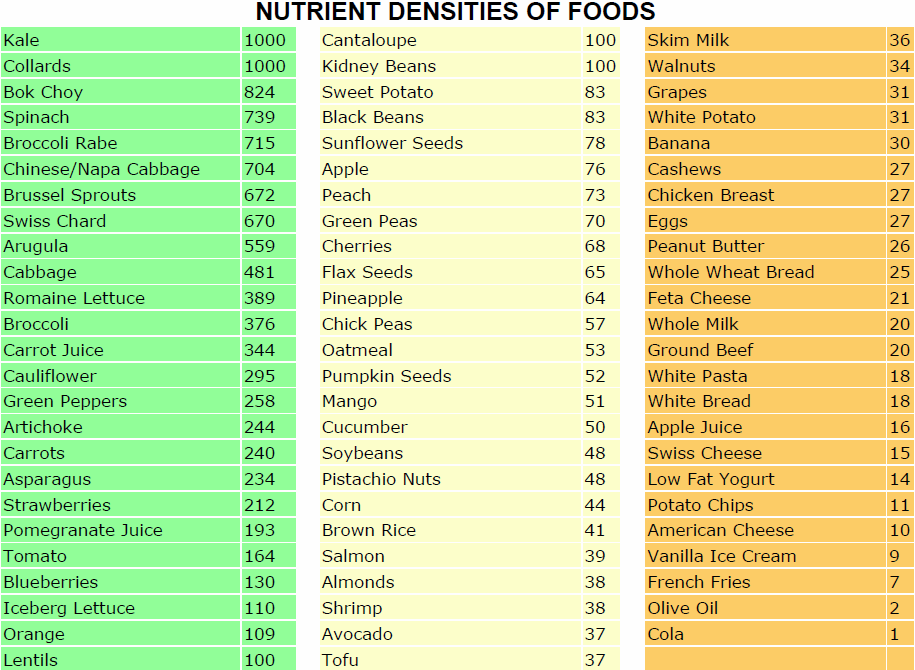
Nutrient density
Can obese people be malnourished? Surely they can! Consuming a lot of food often means that the quality of food is bad, and such food does not supply all the necessary nutrients for life.
The person who first paid attention to the proportion between the energy value of foods and their actual nutritional value was doctor Joel Fuhrman. He created the Aggregate Nutrient Density Index based on micronutrient concentration of 34 components (fiber, calcium, iron, magnesium, phosphorus, potassium, copper, manganese, selenium, vitamin A, beta-carotene, alpha-carotene, lycopene, lutein, zeaxanthin, vitamin E, vitamin C, thiamine, riboflavin, niacin, pantothenic acid, vitamin B6, folic acid, choline, vitamin B12, phytosterols, glucozinolates, angiogenesis inhibitors, aromatase inhibitors, resveratrol) and on so-called ORAC Score (Oxygen Radical Absorbance Capacity) – the rate of anti-oxidant capacity of products. The scale ranges from 0 to 1000, the more points a product is assigned, the bigger nutrient density it has. In this way a 100-calorie portion of broccoli contains 11 g of protein, the same size portion of Kale contains 7 g of protein, and a steak – 6 g. Calcium: 118 mg, 257 mg, 2 mg, respectively. And so on… Doctor Fuhrman cracked down on a variety of foods, indicating 34 essential components in 100-calorie portions of foods. That is why the table of nutrient densities of foods came into being. You can print it and use when you are planning your weekly menu.
We eat to live, not live to eat 🙂










Comments No Comments
Join the discussion…